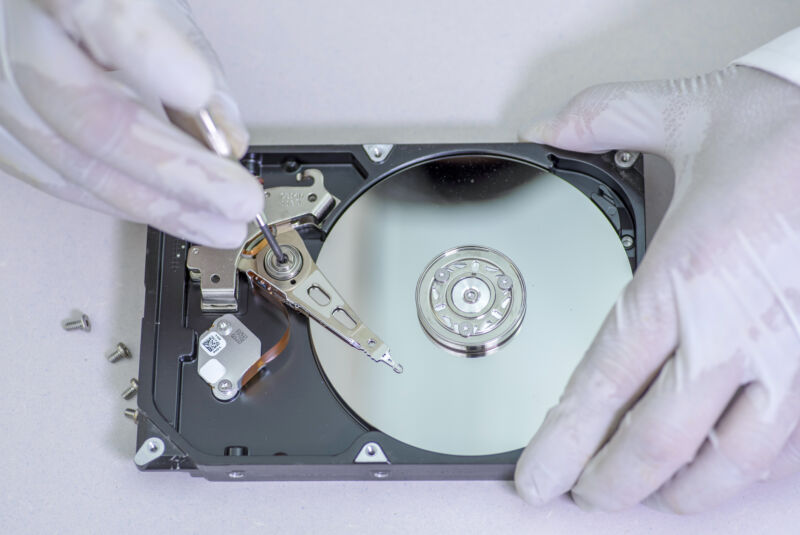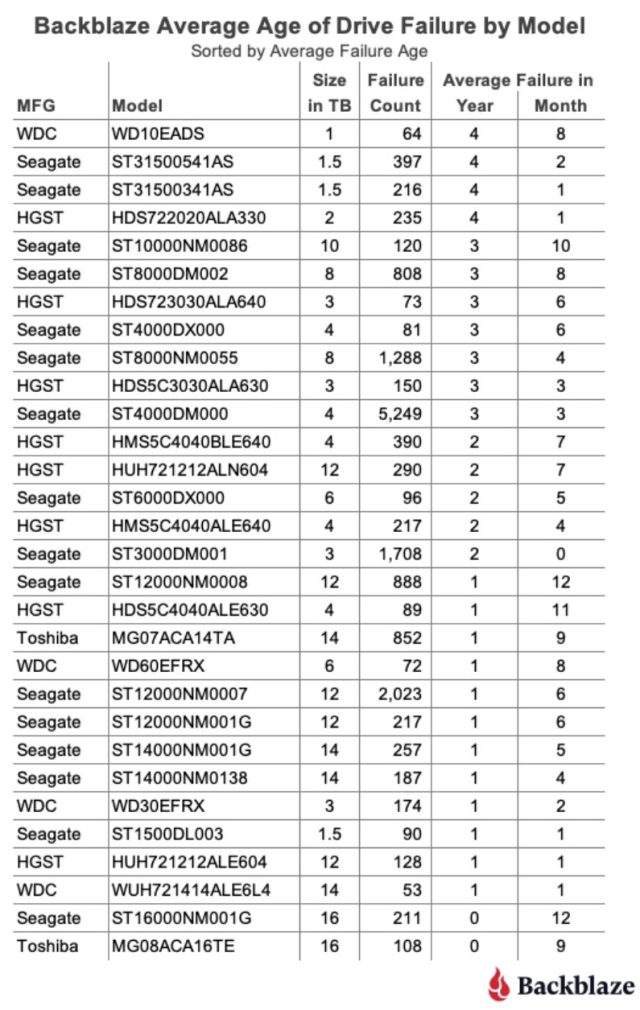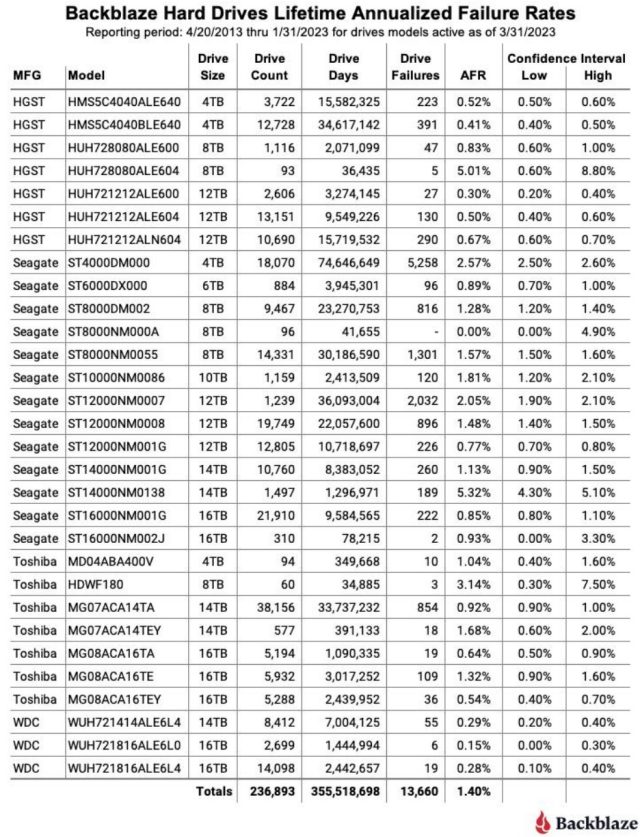
We recently covered a study by Secure Data Recovery, an HDD, SSD and RAID data recovery company, that received 2,007 defective hard disk drives. It found the average time before failure on those drives was 2 years and 10 months. It seemed like a short lifespan, but given the sample size and analysis limited in the Secure Data Recovery report, it was questionable. Today, Backblaze, a backup and cloud storage company with a reputation for comprehensive HDD and SSD failure analysis, followed up with a report on Secure Data Recovery. Own research Consumes a very large data set. Of the 176,155 failed HDDs Backblaze examined, the average age at which the drives failed was 2 years and 6 months.
2 years, 6 months
Backblaze came of age by analyzing its failed drives and their respective power-on hours. The company recorded the failure date, model, serial number, capacity, failure and SMART source value of each drive. The 17,155 drives tested included 72 different models and included failed boot drives, drives with no Smart Raw attribute data, or drives with out-of-bounds data.
If Backblaze only looks at unused drives in its data centers, there are 3,379 drives across 35 models, and the average age of failure is slightly higher at 2 years and 7 months.
Backplace said its results are “consistent” with Secure Data Recovery’s March findings so far. This is despite Backblaze currently using HDDs that are over 2 years and 7 months old.
“When we first looked at the average age at which secure data recovery failed, we thought 2 years and 10 months was too low. We were surprised by what our data told us, but a little math never hurt anyone,” says Backblaze’s blog.
“We’re always adding failed drives to our dataset, and we’re retiring drive models, and we’ll continue to track the average age at failure of our drive models and report back if we find anything interesting.”
When looking at the average age of drive failure by model, Backplace reduces the model count to 30 and eliminates drives with fewer than 50 failures.

Back place
A standout in the table above is the 12TB Seagate ST12000NM0007, which saw 2,023 failures, with each drive averaging 1 year and 6 months old. The only model with more failures was the 4TB Seagate ST400DM000. Backplace saw 5,249 failures, and the drives were an average of 3 years and 3 months old each.
When breaking things down by drive capacity, at first glance, lower capacity drives last longer before failing. However, Backblaze’s blog points out that Backblaze did not have any 1TB, 1.5TB, 2TB, 3TB, or 5TB HDDs in operation in its sample group, making the data set for smaller capacity drives complete. Conversely, most large-capacity HDDs are still used.
“In other words, as these larger drives continue to fail over the coming months and years, they may increase or decrease the average age of failure for that drive model,” Klein explained.

Back place
Failure rate since April 2013
As usual, Backblaze provided a quarterly update of its active arsenal of HDDs. Today, it added data from Q1 2023.
The following table shows the annualized failure rates (AFRs) for 236,893 HDDs across 30 models. The chart does not include drives “used only for testing purposes” or Backblaze had fewer than 60 units.

Back place
Overall, the average AFR was 1.4 percent. The drive with the lowest AFR (0.28 percent) and at least 2.2 million drive days is Western Digital Corporation’s (WDC) 16TB WUH721816ALE6L4 (Backblaze 14,098 units).
The model with the highest AFR (2.57 percent) and least 2.2 million drive days was Seagate’s 4TB ST4000DM000 (backplace consisted of 18,070 units). However, it’s worth noting that this model has the highest number of drive days of any model on Backplace’s table. In February, Seagate HDDs typically show high failure rates in the context of backplaces, and they’re “low cost,” so “their failure rates are generally not high enough to cost less over their lifetime. You can make a good case. For us, many Seagate drive models outperform more expensive drives.” Just as cost-effective.”
It contains Backblaze’s entire data set Hard drive test data page.